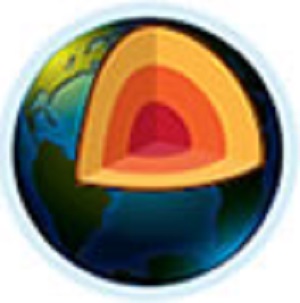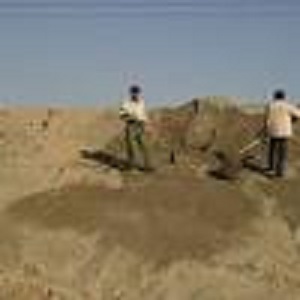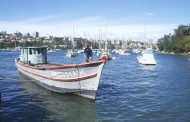
SRE Minerals Limited announces the results of exploration and studies in collaboration with the Korea Natural Resources Trading Corporation of the Democratic People’s Republic of Korea. SRE Minerals Limited (“SRE” or “the company”) announced today their joint venture agreement with the Korea Natural Resources Trading Corporation for rights to develop all rare-earth-element deposits at Jongju, North Pyongan Province.
The joint venture company known as Pacific Century Rare Earth Mineral Limited has the rights under the joint venture agreement which includes the exploration, mining, beneficiation and marketing of all REE deposits in the Jongju area for the next 25 years with a further renewal period of 25 years.
Under the terms of the JV agreement SRE has also been granted permission for a National Rare Earth Mineral Processing Plant on site at Jongju, which is situated approximately 150 km north-northwest of the capital city of Pyongyang, within the North Pyongan Province, Democratic People’s Republic of Korea.
Leading Australian mining and geological consultancy, HDR Salva Resources Pty Ltd, has been SRE’s technical representative for the project and has been commissioned to access the mineralised potential of the Jongju REE target* with special reference to detailed mapping, extensive trenching and limited drilling.
HDR Salva Resources (Pty) Ltd.’s initial assessment of the Jongju REE Exploration Target* indicates a total mineralisation potential of 6.0 Bt (216.2 Mt total rare-earth-oxides including light rare-earth- elements such as lanthanum, cerium and praseodymium (mainly britholite and associated rare earth minerals). Approximately 2.66% of the 216.2 Mt TREO consists of heavy rare-earth-elements. A detailed classification of mineralised potential present in the Jongju REE Target* is presumed to be:
• 664.8 Mt @ >10.00% TREO,
• 1.1 Bt @ 4.72% TREO,
• 579.4 Mt @ 3.97% TREO, and
• 3.63 Bt @ 1.35% TREO.
Dr Louis Schurmann said: “The Jongju Target* would appear to be the World’s largest known REE occurrence.”
Technical information in this announcement has been compiled by Dr Louis W. Schurmann, who is a Fellow of the Australasian Institute of Mining and Metallurgy and a Professional Natural Scientist with over 18 years of experience relevant to the styles and types of rare earth mineral deposits under consideration, and to the activities which has been undertaken to qualify as a Competent Person as defined by the Australasian Code for Reporting of Minerals Resources and Reserves (JORC) 2004. Dr Schurmann consents to the inclusion of information in this publication.
Further exploration is planned to recommence in March 2014, which will include 96,000m (Phase 1) and 120,000m (Phase 2) of core drilling. Results from the exploration program will be reported according to the Joint Ore Reserves Committee of The Australasian Institute of Mining and Metallurgy, Australian Institute of Geoscientists and Mineral Council of Australia (JORC Code (2004/ 2012)).
Investigations by the DPRK’s Academy of Science geologists have also identified several HREE targets*. There are also seven newly discovered carbonatite complexes which have been identified as green-field exploration targets. Exploration programs have been planned to assess their potential in 2014, together with the evaluation of known bastnasite and monazite deposits.
According to the mentioned HDR Salva Resources’ assessment, the Jongju REE Target* also contains economical quantities of rare and critical metals associated with fluorite, apatite, zircon, magnetite, ilmenite, nepheline and feldspar. These commodities will also be addressed during future exploration and further studies.
“This joint venture agreement reinforces the strong and constructive relationship SRE has developed with the DPRK over that time,” he said.
“The REE resource potential of the DPRK, while estimated to be massive has only been lightly explored to date. Given the major economic significance of the effective utilisation of these important minerals to the DPRK, we look forward to working in close co-operation with our partner to progress the development of this excellent opportunity.”
In terms of back ground, the majority of rare earth elements were sourced from placer deposits in India and Brazil in 1948. During the 1950’s, supply came mainly from South Africa, mined from large veins of rare earth-bearing monazite. Then from the 1960’s to 1980’s, rare earths were supplied primarily from the U.S., predominantly from Mountain Pass in California. Competition from China and environmental concerns eventually saw the U.S. operations shut down, and for the last 15 years China has dominated global supply. China today supplies an estimated 90-95% of the global market.
China has recently set quotas to restrict its rare earth exports, and global suppliers have made considerable headway in reducing dependence on Chinese supply. Based on this, several major rare earth companies have been taking advantage of this situation while many junior exploration companies have embarked on exploration programs to add value to small and relatively low-grade REE occurrences.
References to Exploration Target(s)* or Target(s)* in this document are in accordance with the guidelines of the JORC Code (2004). As such it is important to note that in relation to reported Exploration Targets or Target any reference to quality and quantity are conceptual in nature. Exploration carried out to date is insufficient to be able to estimate and report rare-earth mineral resources in accordance with the JORC Code (2004). It is uncertain if further exploration will result in the determination of a rare earth mineral Resource.
Further information will be available at www.pcreml.com and www.sreminerals.com

Kho báu nghìn tỷ USD: Lý do để Triều Tiên “cứng” với Trung Quốc?
Một năm trở lại đây Triều Tiên đang có dấu hiệu lạnh nhạt với “người anh em” Trung Quốc. Và lý do đang được dần dần hé lộ khi Triều Tiên vừa phát hiện mỏ đất hiếm trị giá hàng nghìn tỷ USD.
Mỏ đất hiếm trị giá hàng nghìn tỷ USD của Triều Tiên
Công ty tư nhân SRE Minerals đã phát hiện mỏ đất hiếm trị giá hàng nghìn tỷ USD này ở mỏ “Jongju”, nằm ở tỉnh Pyongam cách Bình Nhưỡng 150 km về phía Tây Bắc. Mỏ đất hiếm có trữ lượng khoảng khoảng 216,2 triệu tấn. Đây là mỏ đất hiếm lớn nhất được phát hiện từ trước tới nay.
Đất hiếm là một tổ hợp nhiều khoáng sản quan trọng trong và không thể thiếu trong các ngành công nghệ và kỹ thuật cao.
Theo Đài tiếng nói Nga, SRE Minerals đã ký thỏa thuận hợp tác với tập đoàn Korea Natural Resources Trading Corporation (được chính phủ Triều Tiên trao quyền quản lý đất hiếm ở quốc gia này) để thành lập Tập đoàn Pacific Century Rare Earth Mineral Limited (PCL). PCL sẽ khai thác mỏ “Jongju” trong 25 năm và có thể gia hạn thêm 25 năm nữa. SRE Minerals thì được quyền xây dựng một nhà máy chế biến kim loại đất hiếm ở Triều Tiên.
Triều Tiên đang xa dần khỏi quỹ đạo của Trung Quốc
Quan hệ giữa Trung Quốc và Triều Tiên đã xấu đi rất nhiều sau khi chủ tịch Kim Jong Il từ trần và người con thứ 3 là Kim Jong Un lên thay. Trong khi Triều Tiên trở nên ít “nghe lời” Trung Quốc, thì nhà cầm quyền Bắc Kinh cắt giảm hàng loạt viện trợ và sự ủng hộ với Bắc Hàn.
Hồi tháng 2 năm nay, Trung Quốc đã đồng ý với Mỹ việc trừng phạt Triều Tiên, sau khi nước này tuyên bố thử thành công tên lửa mang đầu đạn hạt nhân. Đây được coi là một dấu mốc cho sự rạn nứt giữa Triều Tiên và Trung Quốc, khi mà Trung Quốc thường đưa ra lá phiếu phủ quyết các nghị quyết trừng phạt Triều Tiên của Hội đồng Bảo an Liên Hợp Quốc.
Tình hình Triều Tiên cũng đang diễn ra theo xu hướng ông Kim Jong Un tập trung hóa quyền lực vào tay mình. Đặc biệt là ở sự kiện gần đây, khi ông Kim bắt nhân vật số 2 trong hệ thống chính trị Triều Tiên ngay tại phiên họp Bộ Chính trị Triều Tiên mở rộng. Ông Jang Song-thaek, Phó chủ tịch quân ủy Trung ương, chú rể của ông Kim Jong Un, bị xử tử ngay ngày 12/12 vì tội danh phản đảng và âm mưu lật đổ chính quyền.
Ông Jang Song-thaek (bên trái) từng được coi là “quan nhiếp chính” khi lãnh đạo trẻ tuổi Kim Jong Un lên cầm quyền.
Vụ xử tử ông Jang có thể là báo hiệu chấm dứt làm ăn kinh tế giữa 2 nước Trung Triều. Một trong số các tội danh của ông Jang bị cáo buộc là việc cho “nước ngoài” thuê đất ở Rason (nằm ở phía Tây Bắc Triều Tiên, gần biên giới Trung Quốc). Ngoài ra, ông Jang còn bị khép tội cho phép cấp dưới thân tín bán than và khoáng sản quý một cách bất hợp pháp ra nước ngoài. Hai tội danh trên của ông Jang chẳng khác nào chỉ thẳng mặt vào Trung Quốc.
Tập trung quyền lực
Như thế, có thể ông Kim Jong Un đang tiêu diệt các phe phái chống đối để tập trung khai thác các nguồn lợi từ khoáng sản của Triều Tiên, mà đặc biệt là đất hiếm.
Theo tình báo Hàn Quốc, nguồn khoáng sản ở Triều Tiên có giá trị hơn 6 nghìn tỷ USD, mà đất hiếm là một nguồn tài nguyên quan trọng. Tuy nhiên, Triều Tiên khá yếu kém về công nghệ khai khoáng. Vì thế muốn khai thác “kho báu” đất hiếm, quốc gia lạc hậu này phải hợp tác với những nước có trình độ khoa học kỹ nghệ cao như Hàn Quốc hay Nhật Bản.
Mặt khác, Trung Quốc hiện đang là quốc gia có lượng sản xuất đất hiếm lớn nhất thế giới với sản lượng gần 124.000 tấn vào năm 2008, chiếm 97% thế giới. Cuối năm trước, Trung Quốc từng đưa ra một đạo luật cấm xuất khẩu đất hiếm sang Nhật, khi trang chấp biển đảo giữa 2 quốc gia Đông Bắc Á bị đẩy lên đỉnh điểm. Lệnh cấm này ảnh hưởng rất lớn tới các hãng công nghệ Nhật, vốn đang khó khăn sau vụ siêu động đất 2011 và sự xuống dốc của ngành công nghệ quốc gia Mặt trời mọc, trước những cạnh tranh mạnh mẽ từ các tập đoàn Trung Quốc và Hàn Quốc.
Đất hiếm bao gồm 17 loại khoáng sản và là một loại nguyên vật liệu đầu vào không thể thiếu đối với hàng loạt sản phẩm công nghệ cao, từ động cơ tên lửa, điện thoại di động tới màn hình TV.
Nhìn toàn cục, có thể thấy Triều Tiên đang sẵn sàng cắt đứt quan hệ với Trung Quốc và mời mọc những cường quốc công nghệ quan tâm tới quốc gia này. Mỹ, Nhật, Hàn Quốc là những đối tượng khả dĩ nhất.
Đất hiếm – bài toán khó giải cho Kim Jong Un
Nhưng đất hiếm là bài toán khó giải cho Triều Tiên và để sử dụng đất hiếm làm con bài chính trị không hề đơn giản.
Thứ nhất, vì bên cạnh việc là một hợp chất quý, đắt thì đất hiếm cũng không được chào mua nhiều. Bởi chỉ có các quốc gia có nền sản xuất kỹ nghệ cao mới cần mua đất hiếm. Và khi nguồn cầu bị bó hẹp, bên mua có thể liên kết với nhau để ép giá bên bán.
Thứ hai, khai thác đất hiếm là một ngành công nghiệp đòi hỏi trình độ kỹ thuật cực cao và dễ gây ô nhiễm môi trường. Quá trình khai thác sẽ phát sinh nhiều chất độc hại, đặc biệt là có tính phóng xạ cao.
Cuối cùng, đất hiếm có tên gọi như vậy không phải vì nó ít, mà vì nó chứa nhiều nguyên tố hiếm. Tổng tài nguyên đất hiếm trên Trái Đất khoảng hơn 150 triệu tấn (thống kê năm 2008). Ngay như Việt Nam cũng trữ lượng đất hiếm được dự đoán vào khoảng 22 triệu tấn, đứng hàng thứ 4 trên thế giới. Hiện Việt Nam đang hợp tác với Nhật Bản để khai thác đất hiếmtại mỏ Đông Pao (Lào Cai). Dự kiến mỏ này sẽ có công suất 3.000 tấn vào năm 2013, sau đó sẽ tăng lên 6.000 tấn.












































